Light on the Forelands
Our Great New Book
This beautiful book will look great on any coffee table and will make an ideal gift for anyone interested in the history of lighthouses and their keepers. It is also a definitive history of the Knott family of light keepers.Written by pharologist Ken Trethewey and genealogist Clifford Trethewey, each with a lifetime's expertise in their specialization, the book celebrates lighthouses and their keepers in 448 full colour pages of a quality hardback edition larger than A4 (297 x 230 mm).
The white cliffs of Dover are extremely well known to travellers crossing and passing through the English Channel, but the lighthouses that serve shipping in this, the worlds busiest seaway, are rather less famous yet have amazing stories to tell. Whilst guarding against tragedy on the Goodwin Sands, the North and South Forelands have played important roles in the history of technology as well as providing vital navigational aids. This unique collaboration between brothers, Ken and Cliff Trethewey, presents not only the detailed history of the lighthouses but also embraces the remarkable personal stories of the many families who lived and worked there, in particular, the Knotts, one of the most significant families of keepers in history.
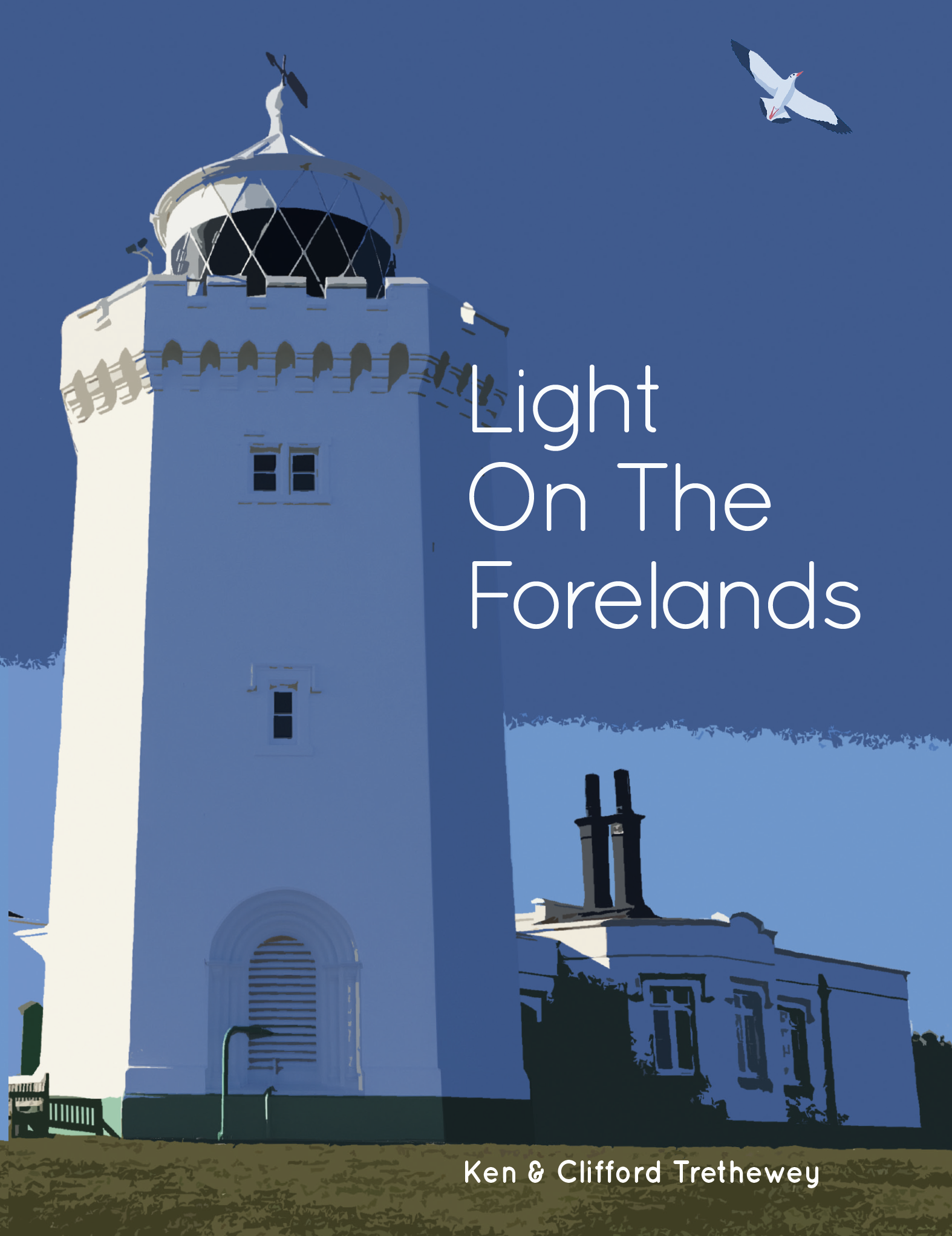 See the full Contents here.
See the full Contents here.
Chaper By Chapter
To help support our original research we would ask you to Please Buy This Book. It is on special offer at only £25. You will not be disappointed. However, for the benefit of researchers, selected chapters are provided in pdf form here:
From Prehistory to the Romans 13; Prehistory 13; Portus Dubris and Thanet 13; After the Romans 16; The Problem of Sand 17; The Conundrum of Sea Levels 21; The First Aids to Navigation 22; The Goodwin Sands in Culture 23
Birth of an Industry 29; Ecclesiastical Lights 29; The Industrial Age Begins 33; The First Navigational Lights 35; Coal 37; Candles 40; Glass And The Lighthouse Lantern 41
Birth of a Tradition 45; Through The Eyes Of A Child 45; How Did It All Start? 46; The Co-operatives 49; The Capitalist Motive 49; The Hunt for Details 50
1600-1700 53; Letters Patent 56; The Osboldstons 57
Early 18th Century 73; Keeping the Tradition Alive 73; In The Beginning 74; In Search Of The 18th c Knott Family At St. Margaret’s At Cliffe 75; The Knotts Of Acrise 79; A Marriage Of Uncertainty 80; The Knotts Of St. Margaret’s At Cliffe 82; A Typical Working Life 82
Second Half Of The 18th Century 85; Henry - The Next Generation 85; Advancing Technology - Ideas That Revolutionized Lights In The 18th and 19th Centuries. 87; An Old Light And A New Keeper 89; The Old Lights Are To Be Replaced 90; War With France, But The Lights Continue To Shine Brightly 93; Naval Activity Off The Coast 93; The New Technology Is Not So Bright 95; The Durrant Sketches 96; The Turner Sketches 98
Early 19th Century 101; The Young Henry Marries 101; Old Henry Writes his Will 102; The Contents of Henry’s Estate 103; Another Keeper Is Found 104; Living With The Sea 104; The Lighthouse Is Put On The Map 105; Living With The Unexpected 105; Trinity House Makes Its Mark 106; The Census Enumerator Calls At Every House 109; A Question Of Ownership 110; The Keepers Face A Decade Of Upheaval 110; The New Lighthouses Arise, But Life Carries On 113; The New Lighthouses Attract Attention 114; James Walker 115; A Detailed Report From Inside the New High Lighthouse 116
Mid-19th century 121; A Family Light in Yorkshire 121; Destination Yorkshire 122; A Magnificent Lighthouse 123; The Light Keepers Identified 124; One’s Company, Two’s a Crowd! 125; A Turn for the Worse 126; A Change in Direction 126; A New Keeper Arrives at Flamborough 127
The Golden Age of Victoria 133; A Deplorable Event 134; The Knotts Occupy Both Lights 135; A Year Of Births And Deaths 136; The New Manning System Reaches The South Foreland Lights 136; Michael Faraday - Working Man’s Hero 138; Electric Magic 139; Henry And George Knott Meet Michael Faraday 142; A New Light In Cornwall Brings A Shock To The Family 142; The Lights Shine Out On Census Night 143; The Limelight At The South Foreland 144; Change Comes To South Foreland 145; Anyone Can Be Replaced 146; New Keepers Take Up Residence 147; The Man Who Built a Lighthouse 148; The End Approaches 149; The Keeper Who Already Knew About Electricity 151; Another Unusual Start In Life 152; George Avoids A Move 153; George Leaves The Family Light 153; New Surroundings, New Colleagues 154; The Romance Of The Most Famous Lighthouse In The World 155; Life On The Eddystone 156; A Year In The Life Of The Eddystone Lighthouse - 1863 158; A More Domestic Scene 159; Developments In Alma Cottages 160; Eddystone Revisited 1864 161; The Curious Tale Of A Name And An Earl’s Daughter 165
The Great Legacy Of Prince Albert 167; Showing The World What Can Be Done 167; The Genealogy of the Optic 171; The Man Who Made A Model Lighthouse 174; George’s Model Goes On Display 178; Touching the Past 181; The Lighthouse Becomes an Exhibition 182; A Final Thought 183
Nature’s Lightning Is Tamed 189; Of Engines and Engineers 192; A New Baby For A New World 193; Transformative Times 194; A Piece Of Sunlight Poured Out Upon The Night 194; Foreign Competition Becomes Fierce 196; When Science Is Fogged 197; The Science of Fog and the Fog of Science 200; Major Elliott Describes The Keepers 204
Government Inertia 209; The Lighthouse Manifest 212; The Brave New World of Electricity 215; South Foreland Becomes A Permanent Test Bed 217; The Fog Returns 220; Electricity or Electrickery? 223
A Churn Of Staff 229; These Crazy English! 232; That Curious Wall 236; A Flight Of Fancy 236; Now You See Him – Now You Don’t 238; Electric Light Tips 239; Engineers in Charge of Lighthouses 241; The Keepers Keep On Coming 244; Climate Change 246; The New World of Communication 247; Oh! Mister Marconi - How Wonderful! 248; The First Serious Messages 250; Wireless Signals by Day, but Light by Night 251
Appledore, Shipyards And Three Brothers Named Knott 255; Induction into Trinity House 257; Holyhead and the Skerries Light 258; Families On The Skerries 259; A Slide Into Depression 262; The Man In The Middle 263; The Mistake That Led To Mucking 264; A Passage To India 266; A Brush With Death 268; If They Exist - A Word of Caution 268; Another Welsh Compromise 268; Comfortable Years At St. Ann’s Head 269; Clips From The School Log Book 271; A Light In The Midst Of A Storm 273; It’s Time To Think Of Leaving St. Ann’s 274; Little has Changed in Holyhead 275; A Second Bite at the Skerries 276; The Devon Years 1902 – 1908 277; Bull Point and One Last Move 280
An Ever-Changing Scene: 1901 - 1910 283; A Career Cut Short 286; Life has a New Order 290; A New Light Is In Place, But Is It Safe? 292; Last Man Out Turn Off the Light 295; The Cliff Remains a Danger 295; And Then There Were Four 297; The Old Lighthouse Tells a New Story 299; Postscript 301
Postcards - Public and Private 303; When “Romance” Was Differently Perceived 305; A Little Bit of History 306; Guiding Light Keepers 308; A Hidden Network Of Light Keepers 309; Snapshots of St. Ann’s Head 310; North Foreland Tower Is Unfit For Purpose 312; Returning to Kent From Devon 317; The Last Lighthouse For George 319; The End Days 320; A View Through The Ages 322; Signal Stations 323; Lloyd’s of London 323; A Bright Idea 324; Radio Navigation 325; Decca and Gee 329; DGPS 329
The Retirement Years In Dover 1890 - 1900 331; Castlemount Road, Dover 332; A New Equilibrium 334; A Game of Domestic Chess 335; A Turning Point 336; Another Case of Who You Know? 337; The Pentside Chapel 338; From Beat to Banquet - a Knott Forgotten 341; The Queen is Dead – Long Live the King 342; Life in Dover Carries On 342; The Light Has Gone Out 344; The Twilight Years 345; From Pentside to Queen Street 346; The Knott Family Loses Its Matriarch 347; War With Germany 348
Transformative Times 351; A Second-Hand Lens 352; Mercury 353; The Light 354; Piccadilly of the Sea 355; The Old Lighthouse has a New Owner 356; The Four Light Keepers of 1911 357; Dark Clouds Over Europe 358; The Onset Of War 359; Marconi’s Direction-Finding Antenna 362; An Intimate View 363
A Magnificent Coastal Footpath 369; The High Light Of A Visit 374; Wartime Damage To The Optic 384; To The (Low) Lighthouse 385; Cliffe House And The Remains Of The Old Engine House 396
The Book's Background
Too often books have been written about lighthouses and not paid due regard to those who kept them working so reliably and efficiently. We might forgive those authors for simply not having sufficient information to build a good story. That is not the case in this book.
Ken and Cliff Trethewey were fortunate to belong to a family with the longest serving record in the history of light keeping. From around 1730 to 1911 the Knott family kept lights shining for the safety of mariners at some of the best known lighthouses in England and Wales. Finally, after researching for most of their lives, the authors have brought together their joint expertise to write this book that celebrates not just our wonderful heritage of lighthouses, but also the lives of the men and women who made them work. This book will become an important part of British sociological history.
Some Sample Pages
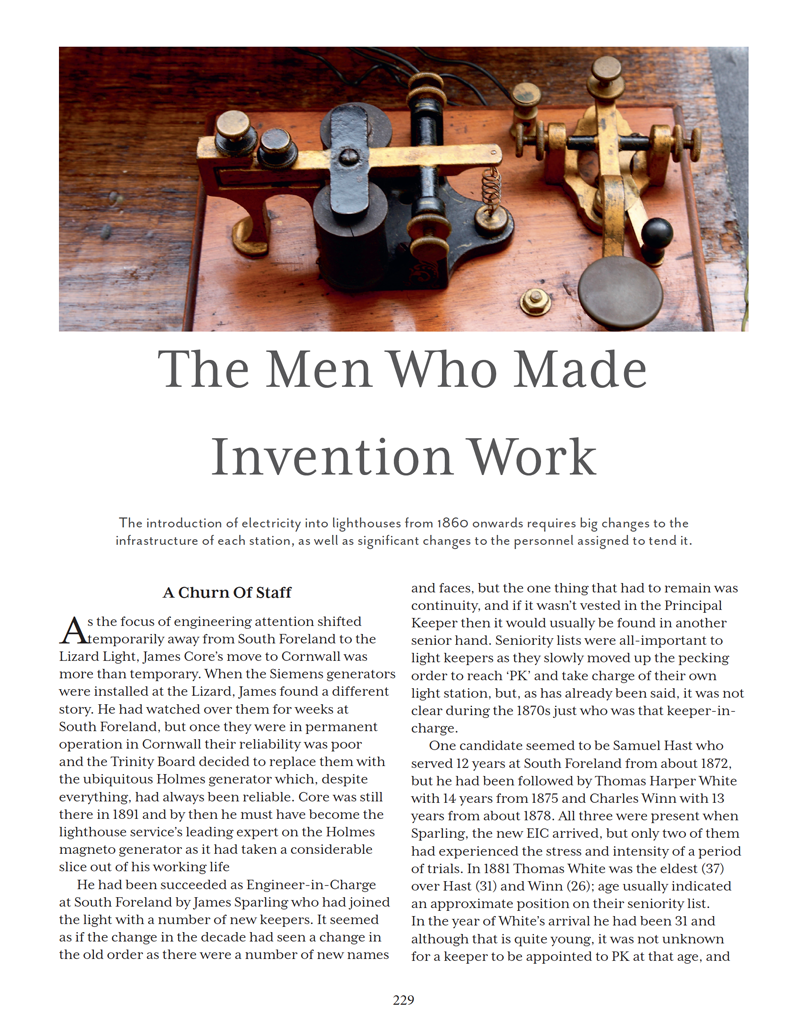
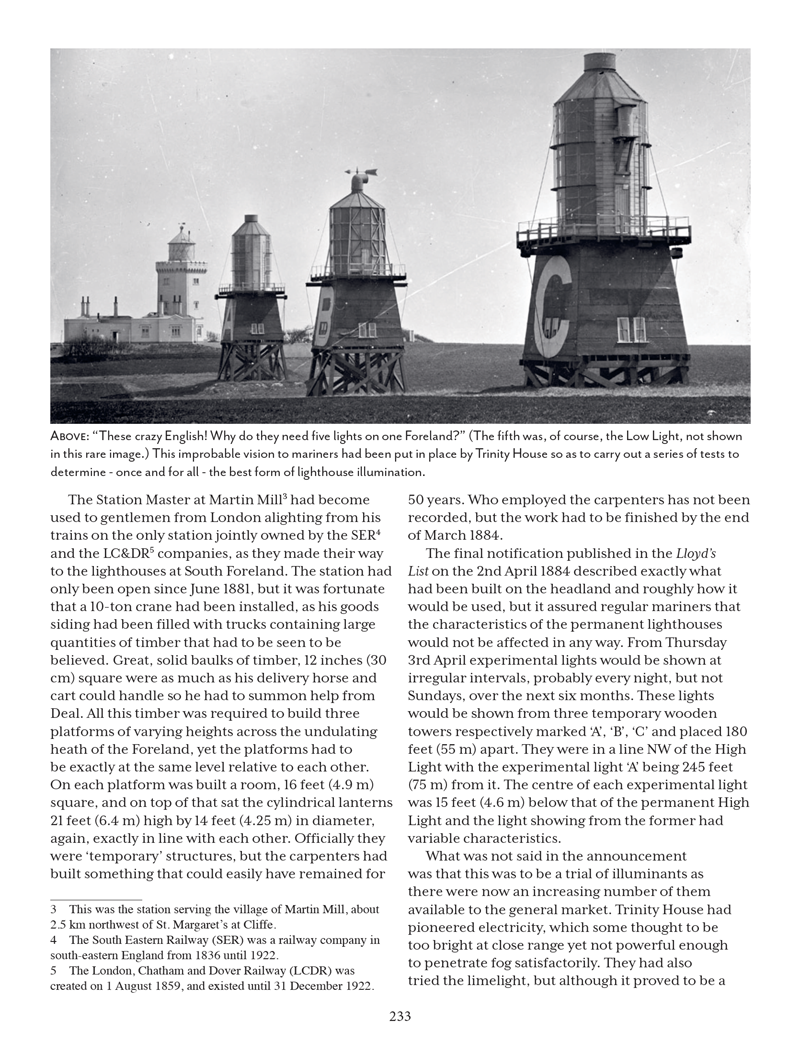
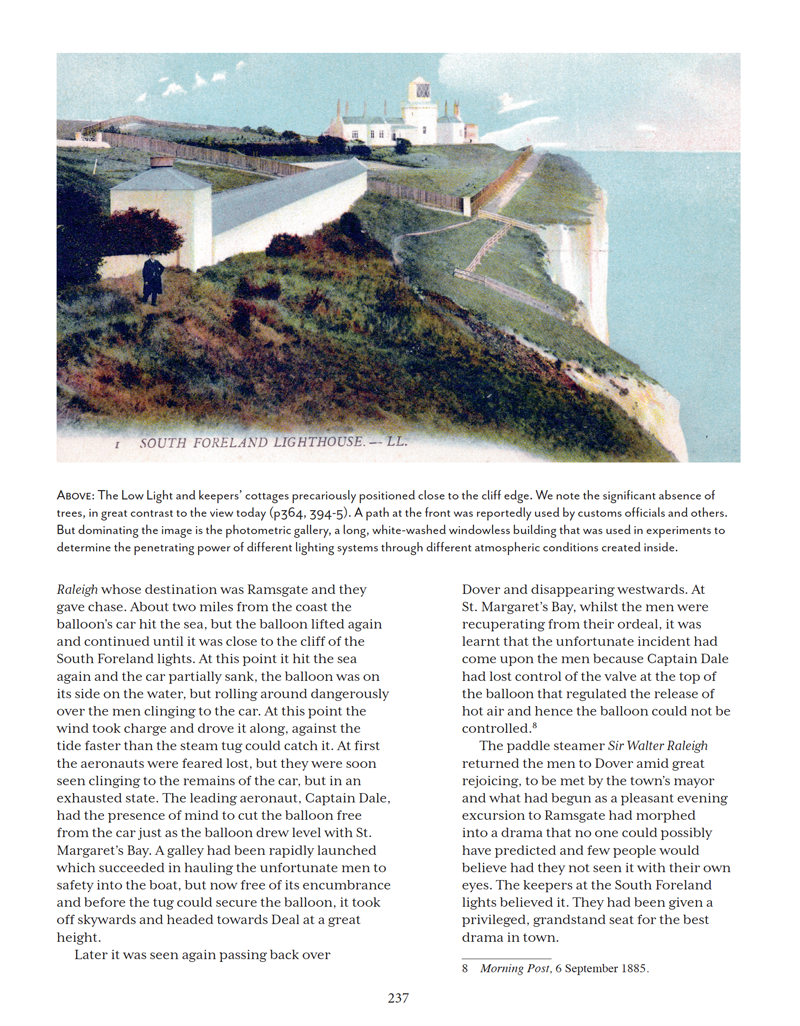
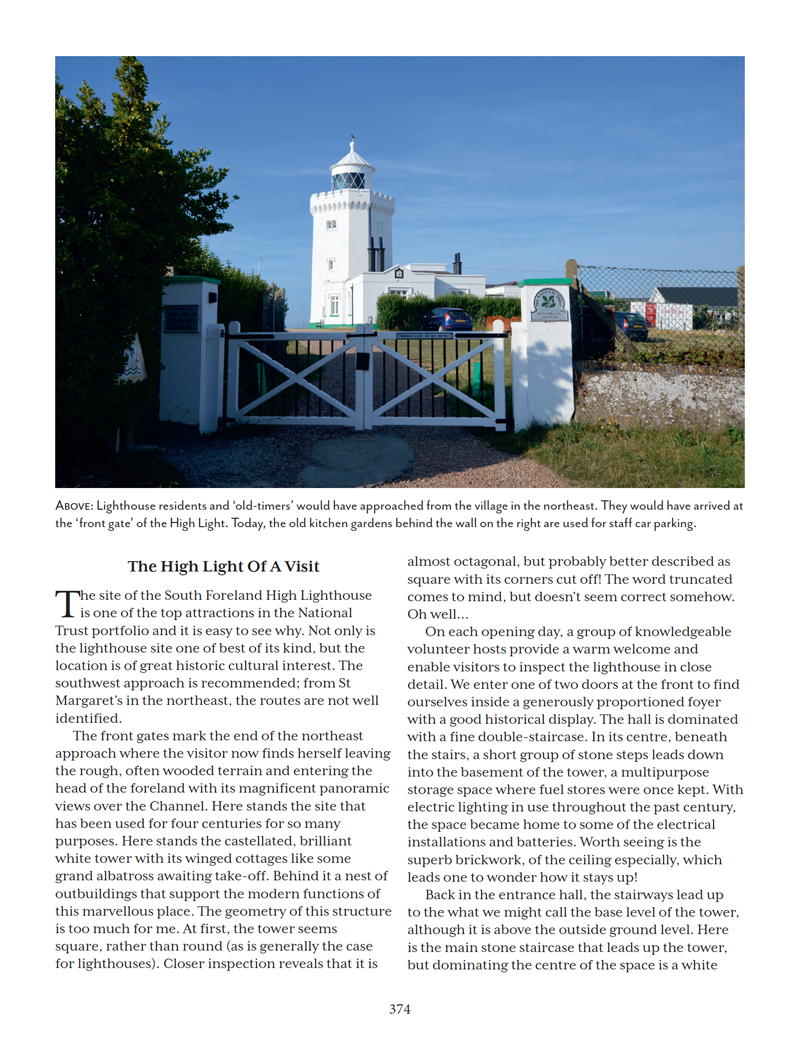

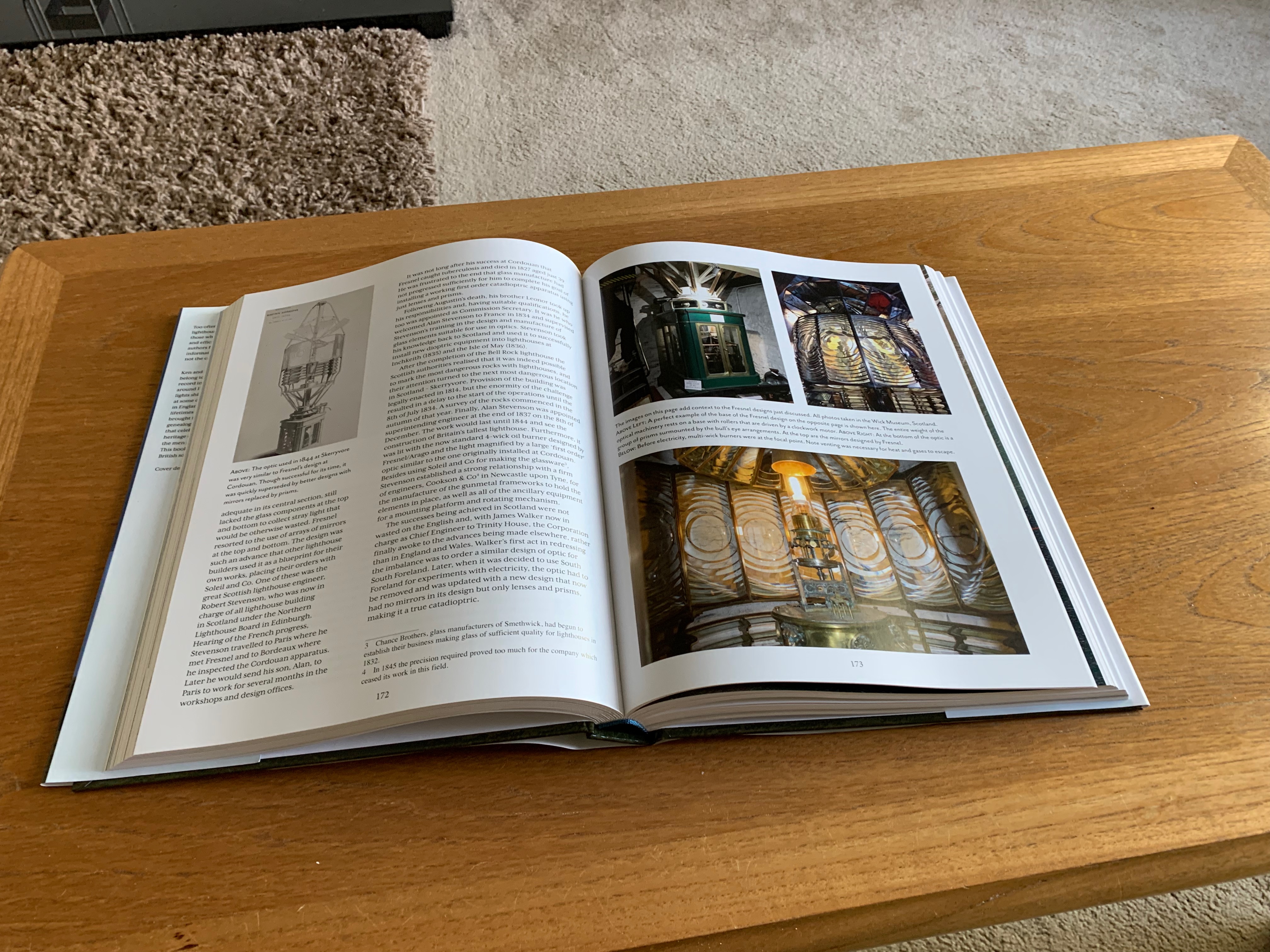
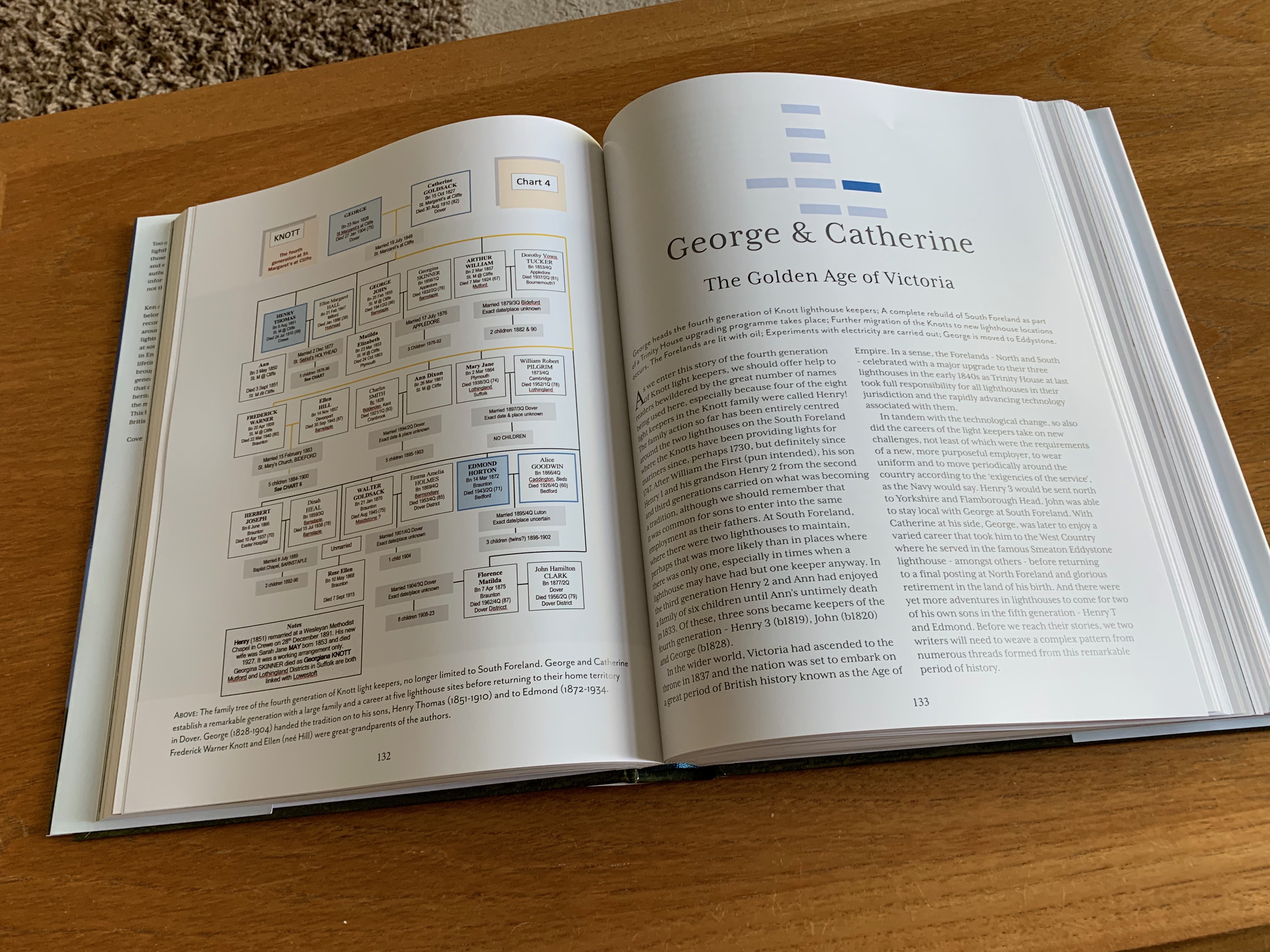
The Authors
Ken Trethewey is a retired marine engineer specializing in materials in engineering systems. Based in Cornwall UK, he has written books about corrosion engineering, lighthouses and jazz. When he is not pursuing his interest of pharology, he now operates his own publishing business, Jazz-Fusion Books. Ken first became interested in lighthouses at the age of 16 when he discovered that he was descended from a long line of lighthouse keepers – the Knott family of South Foreland. In 1992 he co-founded the Lighthouse Society of Great Britain and in 1994 started one of the first websites devoted to pharology that continues today. From 1998 to 2005 he published eight annual editions of the Lighthouse Encyclopaedia on CD-ROM which contained information on 13,000 lighthouses. In 2002 he was a co-founder of the World Lighthouse Society and the same year he published a book entitled North Atlantic Lighthouses with the top French photographer Jean Guichard. Besides English, the book was translated into French and German. Ken’s latest project is a series of books on Pharology. The first was called Ancient Lighthouses and was published in 2018.
At sixteen years of age, Clifford Trethewey was a reluctant electrical fitter apprentice for the Admiralty’s Royal Navy Dockyard at Devonport, but it taught him how to repair machinery and built upon his boyhood passion for model making. At school Cliff was always an ‘arts man’ drawn to the skills of penmanship demonstrated in the occasional prize for handwriting and English essays. In his 20s he became fascinated by social history and the journals written by ordinary people. Like them, Cliff has always felt driven to write and this eventually found an outlet in the family stories he heard told over and over again as he decided to use a genealogical approach to validate their accuracy and embellish their context. In the late 1970s, this decision came at the right time as archives began to open their doors to the public and technology arrived in the form of a home computer. Cliff now had the tools he needed to create a story and after 40 years of experience that skill has been brought to this book. Lighthouses are a fascinating subject, but in so many books the lightkeeper remains unnamed. Cliff has sought to change it by using our own family history in an attempt to create a basic social history of those who gave up their nights to keep the lamps burning for the benefit of others at sea.
Clifford has also written other detailed family histories that can be found here.